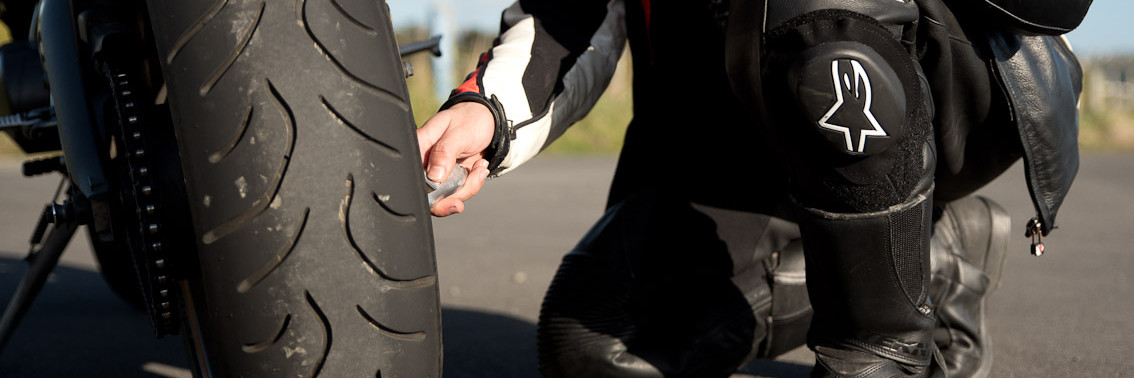Punctures
A puncture is, literally, a real let-down. So, it pays to know how to attempt a roadside puncture repair, to get you to a tyre shop or even home.
Punctures are more common in urban riding
Punctures happen, but they’re not entirely chance incidents. Punctures are more common in urban riding than on the open road, because there’s more random debris around and riders are more likely to go through it when filtering past traffic.
Worn tyres also increase your chances of a flat because there’s less rubber to penetrate to pierce the carcass.
While the chances of a flat on a long road trip are less it pays to carry a suitable puncture repair kit and a means of inflation (12V compressor or manual pump).
Tubeless tyres and tube type
The big difference here is between tubeless tyres and tube type. Modern road bikes are usually tubeless, with alloy wheels, while spoked wheels for off-road use would suggest an inner tube.
However, it’s not always the case. Manufacturers have become adept at creating the spoked-wheel look while retaining a tubeless tyre.
Be wary if you fit a tube into a tubeless tyre. If the bead slips on the rim and the tyre rotates it can tear the tube or the valve stem resulting in a dangerous instant deflation.
Before diving into an attempt to fix the tyre, check:
- that a leak hasn’t been caused by something other than a puncture
- the rim carefully for any dents or distortions that may allow a tubeless tyre to lose air.




